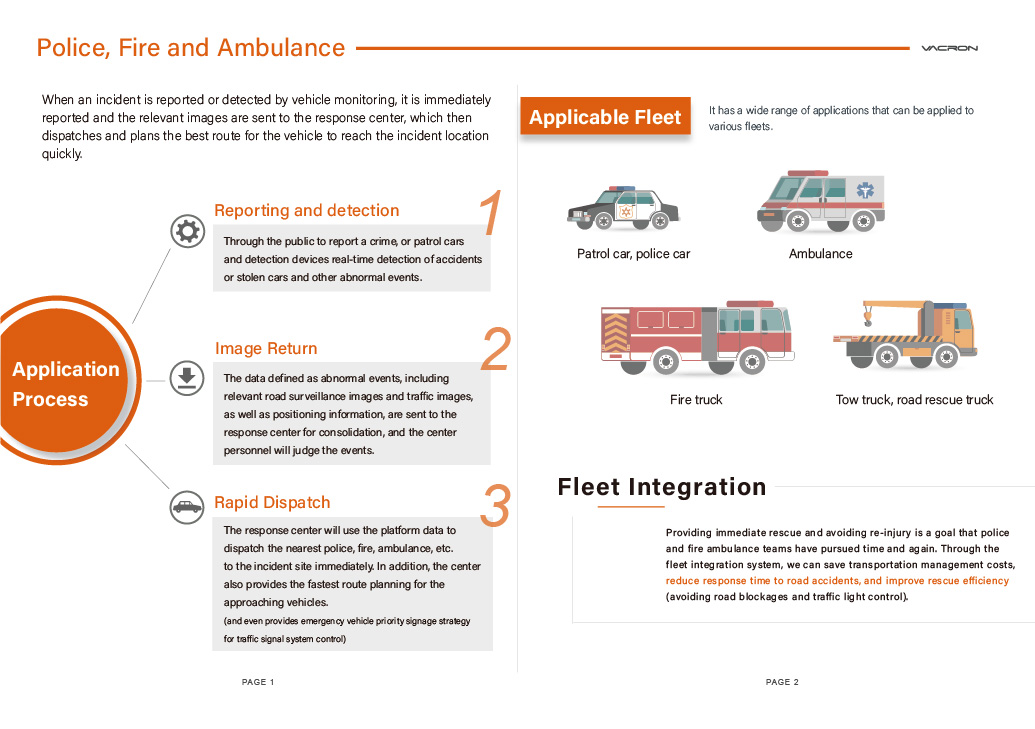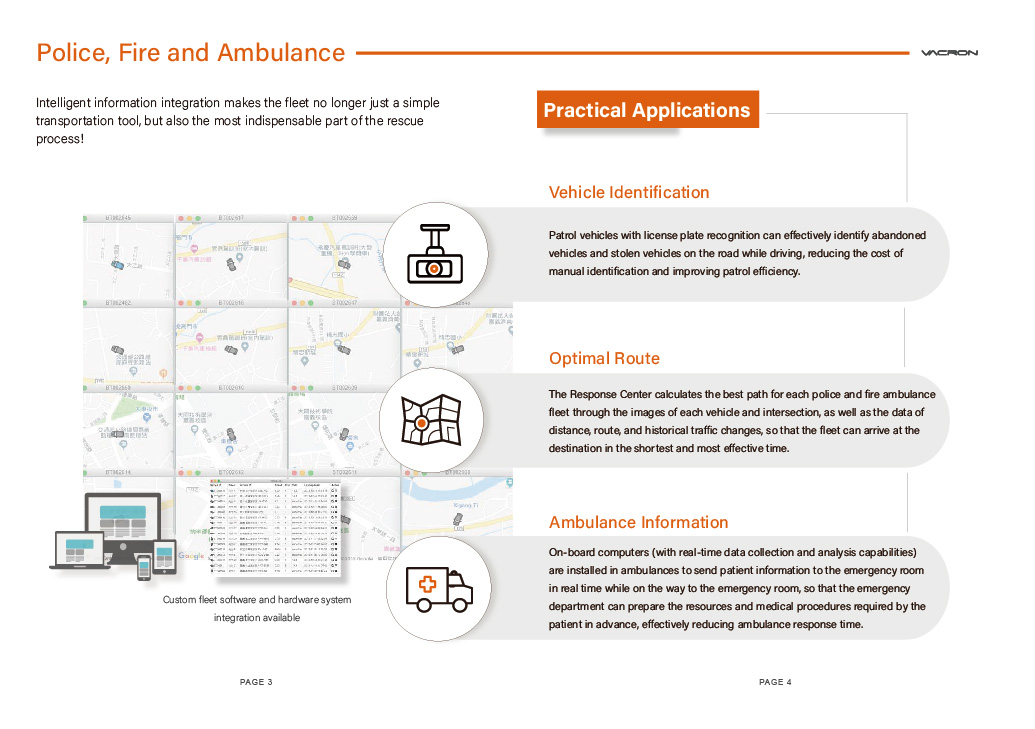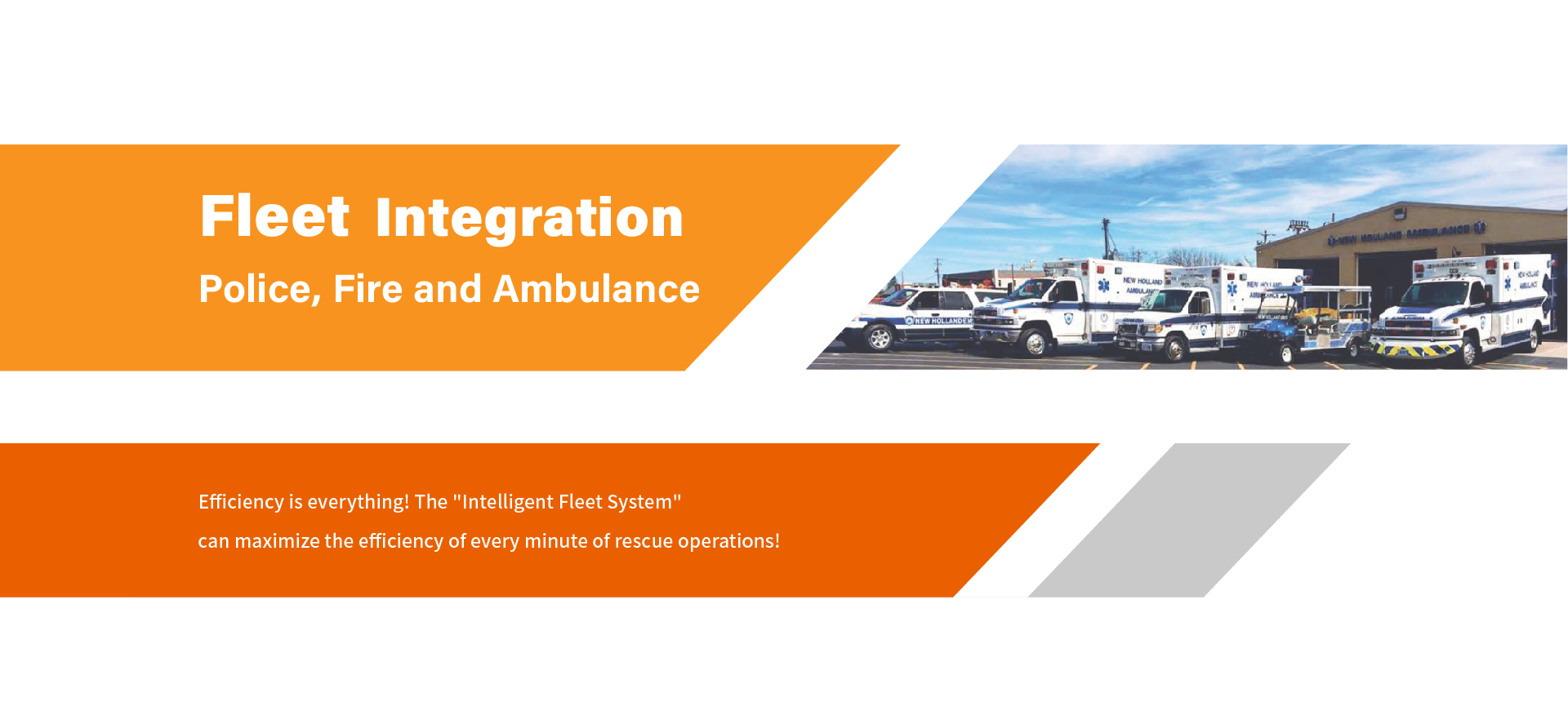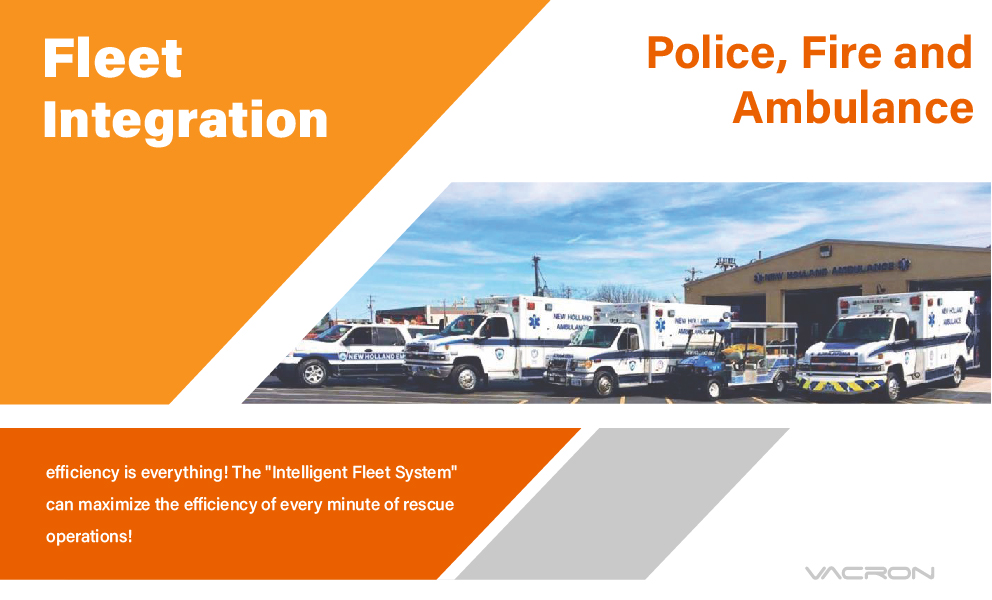
Police, Fire and Ambulance
When an incident is reported or detected by vehicle monitoring, it is immediately reported and the relevant images are sent to the response center, which then dispatches and plans the best route for the vehicle to reach the incident location quickly.
Application Process
Reporting and detection
Through the public to report a crime, or patrol cars and detection devices real-time detection of accidents or stolen cars and other abnormal events
Image Return
The data defined as abnormal events, including relevant road surveillance images and traffic images, as well as positioning information, are sent to the response center for consolidation, and the center personnel will judge the events.
Rapid Dispatch
The response center will use the platform data to dispatch the nearest police, fire, ambulance, etc. to the incident site immediately. In addition, the center also provides the fastest route planning for the approaching vehicles (and even provides emergency vehicle priority signage strategy for traffic signal system control)
Applicable Fleet
It has a wide range of applications that can be applied to various fleets Patrol car,police car,Ambulance,Fire truck,Tow truck, road rescue truck
Fleet Integration
Providing immediate rescue and avoiding re-injury is a goal that police and fire ambulance teams have pursued time and again. Through the fleet integration system, we can save transportation management costs, reduce response time to road accidents, and improve rescue efficiency (avoiding road blockages and traffic light control).
 Practical Applications
Practical Applications
Vehicle Identification
Patrol vehicles with license plate recognition can effectively identify abandoned vehicles and stolen vehicles on the road while driving, reducing the cost of manual identification and improving patrol efficiency.
Optimal Route
The Response Center calculates the best path for each police and fire ambulance fleet through the images of each vehicle and intersection, as well as the data of distance, route, and historical traffic changes, so that the fleet can arrive at the destination in the shortest and most effective time.
Ambulance Information
On-board computers (with real-time data collection and analysis capabilities) are installed in ambulances to send patient information to the emergency room in real time while on the way to the emergency room, so that the emergency department can prepare the resources and medical procedures required by the patient in advance, effectively reducing ambulance response time.



